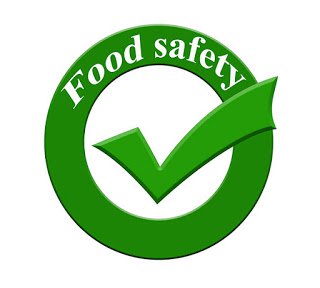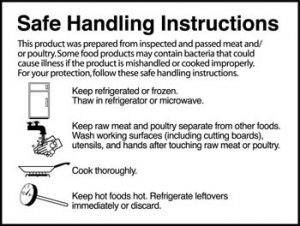How does government protect what we eat?

In 2017 Out of 665 results, 145 were partly or fully made of unspecified meat. Meat labels such as lamb most likely contained traces of other animals DNA; beef and goat. It was proven in 2017 that 145 were detected as contaminated meat samples. Animals such as goat, beef, ostrich, lamb, duck and pig. The “BBC Freedom of Information” told the FSA that a total 73 of the contaminated samples came from retailers; Including three supermarkets. 50 came from restaurants, while 22 originally came from manufacturing or food processing plants.
https://www.bbc.com/news/uk-45371852

The Food Safety and Inspection Service (FSIS) and the public health agency in the USDA, states that meat and poultry products are safe, and correctly labeled and packaged. The agency monitors meat and poultry products after they leave federally inspected plants to make sure none of the products are contaminated. The Safe Handling Instructions guide explains how to cook your meat thoroughly to get all the bacteria and germs out of the meat before proper use.
What is the Voluntary Federal Inspection?
The Voluntary Federal inspection for animals are not covered under mandatory inspection. Animals such as, (rabbit, buffalo, elk, deer and antelope) is handled under the Agricultural Marketing Act. This act gives the Secretary of Agriculture the authority to do whatever steps necessary to make meat products marketable.
Goal for the Food Safety & Inspection Services
The food safety & inspection services prevent food-borne Illnesses and protect public health. The FSIS makes sure all foods incoming are inspected, plotted as data, and are safe to be shipped. The FSIS continues to focus on identifying and implementing new techniques, technologies, and other ways that’ll enhance public health protection and prevent contamination.
What are the USDA’s meat & poultry grades?
There are eight quality grades for beef that explains the process of the USDA’s meat & poultry inspection. There are quality grades, yield grades, prime grades, choice grades and select grades.
For example, beef is graded as a whole carcass in two ways:
- quality grades – Examining and analyzing the tenderness, and juicy flavor.
- yield grades – Examining and analyzing for the amount of usable lean meat on the carcass.
- prime grades – USDA prime grades is produced from young beef cattle. It is typically sold in restaurants and hotels. Prime roasts and steaks are excellent for dry-heat cooking.
- choice grades – A high quality, but has less marbling than Prime grades. Choice roasts and steaks from the loin and rib will turn out to be very tender, juicy, and flavorful. Unlike Prime, which is suited to dry-heat cooking.
- select grades – Moderate quality meats and normally leaner than the higher grades. It turns out fairly tender but, because it has less marbling, It’ll lack juiciness and the flavor unlike the higher grades. Only the tender cuts (loin, rib, sirloin) should be cooked with dry heat. The rest of the cuts made should be marinated before cooking to reach the maximum tenderness and flavor.
The FSIS, USDA and other food inspection services all try to provide safe and healthy foods to release to the market for us Americans to eat safely.
Food Safety tip for families
4 simple steps that can help keep your family safe from food poisoning and contamination at home.
- CLEAN. Wash hands and surfaces often. Even before eating and after.
- SEPARATE. Separate raw meats from other foods.
- COOK. Cook food to the right temperature and thoroughly.
- CHILL. Refrigerate food and make sure the food package is sealed.
